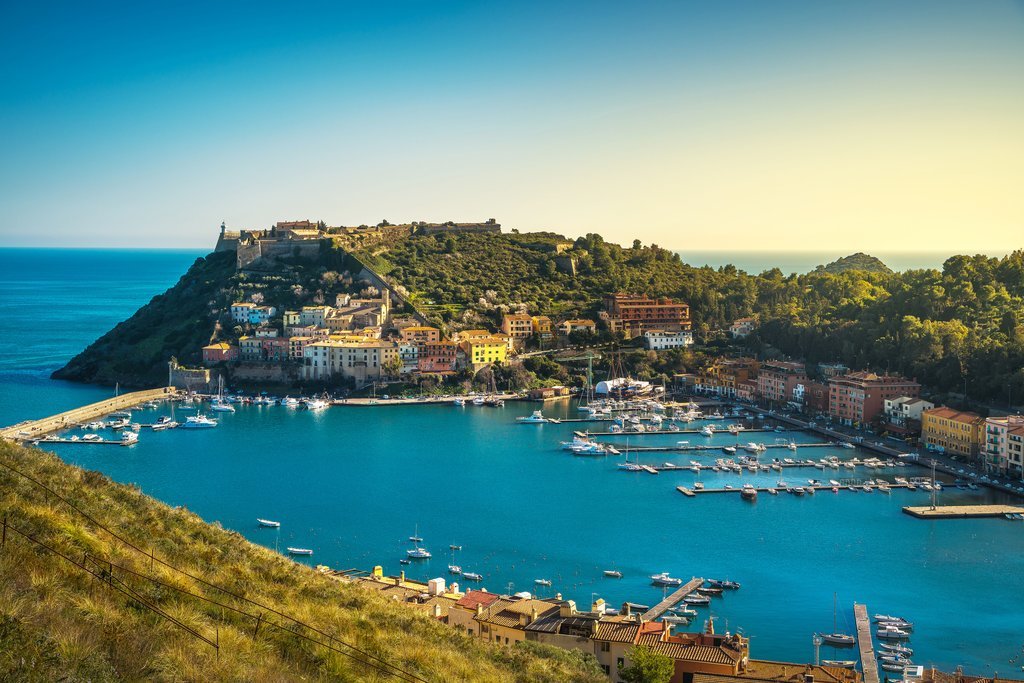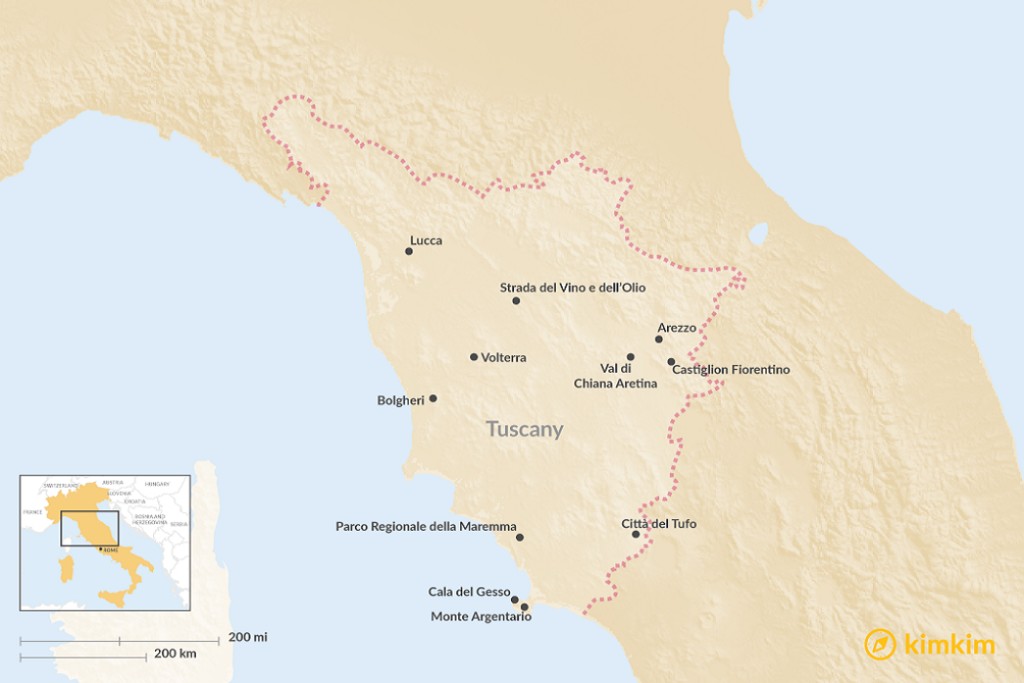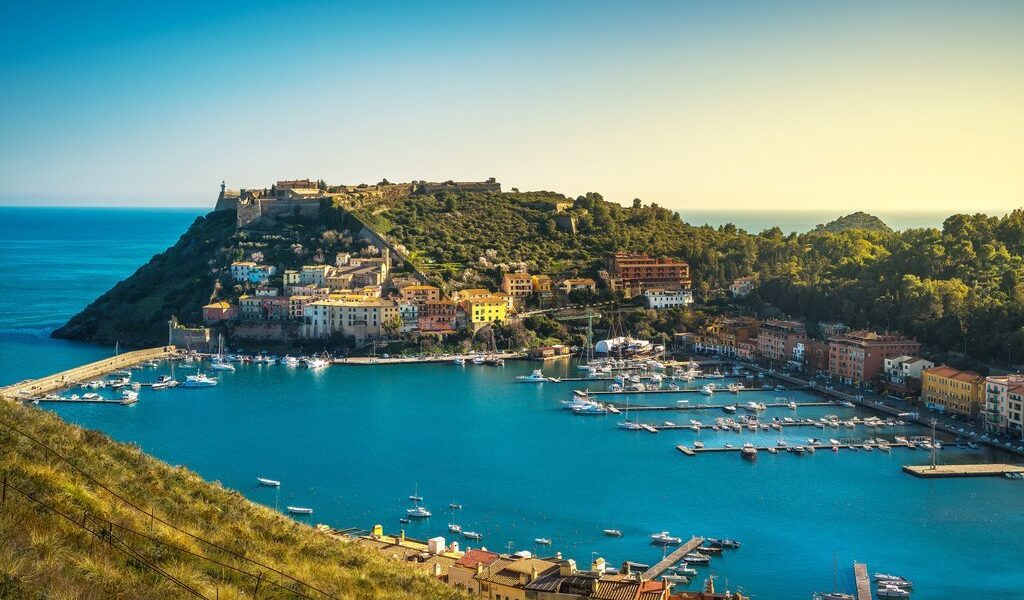
It’s easy to fall into the Florence trap in Tuscany. While no one is denying the appeal of that most cultured of cities, Tuscany goes way beyond the obvious appeal of Pisa’s leaning tower, Siena’s Palio and popular hill towns like San Gimignano. Read on to find out how you can sidestep the crowds and find Tuscany’s off-the-radar highlights.
## Discovering the Hidden Gems of Tuscany: Beyond the Tourist Trail
Tuscany, a region synonymous with rolling hills, cypress trees, and artistic masterpieces, often conjures images of bustling crowds vying for a glimpse of the iconic landmarks. However, venture just a little further afield, and you’ll uncover a wealth of equally captivating treasures, enjoyed with significantly fewer fellow travelers. Step beyond the well-trodden paths and prepare to be enchanted by the authentic heart of Tuscany.
From secluded medieval towns, their foundations laid by the ancient Etruscans, to sprawling nature reserves adorned with fragrant pine trees, Tuscany offers a diverse tapestry of experiences. Discover pristine, little-visited beaches lapped by the azure waters of the Tyrrhenian Sea, or immerse yourself in the tranquil valleys where silvery olive groves and vibrant fields of poppies ascend to hills punctuated by the graceful silhouettes of cypress trees.
Even within the captivating city of Florence, there are avenues for exploring a different facet of its charm. Delve into the lesser-known corners of this Renaissance jewel, uncovering hidden workshops, tucked-away trattorias, and secret gardens that whisper tales of centuries past.
For those seeking a deeper immersion into the Tuscan lifestyle, consider embarking on a more extended journey. A longer itinerary allows for truly unforgettable experiences, such as the thrill of truffle hunting in the verdant forests, the sensory delight of winery tours through sun-drenched vineyards, and the satisfying accomplishment of mastering the art of pasta making in a hands-on cooking class. These immersive activities offer a unique connection to the land and its rich culinary traditions.
### Volterra: A Hilltop Jewel of Etruscan Heritage
Perched high upon a hill, its foundations rooted in the wealth generated from its alabaster quarries since the time of the Etruscans, the captivating town of Volterra is poised to steal your heart. Its skyline, a captivating jumble of terracotta-roofed houses, is embraced by ancient ramparts that gaze out across the vast, undulating plains below. Volterra embodies the essence of Tuscany, a microcosm of its history, art, and culture.
Lose yourself in the labyrinthine cobbled alleys, each turn revealing a new vista or architectural detail, as they eventually lead you to the magnificent Piazza dei Priori. This central square is dominated by the imposing Palazzo dei Priori, an architectural marvel dating back to the early 13th century. Admire its elegant clock tower and the distinctive crenellations that crown its façade, testaments to a rich and turbulent past.
Volterra is a veritable time capsule, offering glimpses into different eras of its storied past. Ponder the enigmatic ruins of its Etruscan acropolis, remnants of a civilization that shaped the region’s identity. Marvel at the remarkably well-preserved Roman amphitheater, a testament to the enduring legacy of the Roman Empire. And delve into the rich collection of Etruscan funerary urns housed within the Museo Etrusco Guarnacci, offering a poignant glimpse into the beliefs and customs of this ancient people.
The town’s medieval cathedral, while seemingly unassuming from the exterior, holds a breathtaking surprise within. Step inside and be prepared to be overwhelmed by the sheer lavishness of its gilded coffered ceiling, a dazzling display of artistic skill and opulent design. The interior is a treasure trove of artistic masterpieces waiting to be discovered.
For an unforgettable experience, consider extending your stay in Volterra with an overnight visit. A particularly appealing choice is the family-run organic farm, Diacceroni, which offers a unique opportunity to experience the Tuscan countryside firsthand. Immerse yourself in the tranquil rhythms of rural life, savor the flavors of freshly prepared organic cuisine, and enjoy the warm hospitality of your hosts.
### Parco Regionale della Maremma: A Sanctuary of Untamed Beauty
If you crave solitude and breathtaking sea views, look no further than the Parco Regionale della Maremma, a sprawling regional nature park located in the Maremma region of southern Tuscany. This protected area offers an unparalleled escape into the heart of the region’s natural beauty.
Embark on invigorating hikes through pristine pine forests and amidst the silvery-green hues of ancient olive groves. Wander along unspoiled coastlines, where the air is infused with the sweet scent of the *macchia*, the characteristic Mediterranean scrub vegetation. This fragrant tapestry of juniper, strawberry trees, heather, myrtle, and broom creates an intoxicating sensory experience.
Begin your exploration at the visitor center in Alberese, where you can gather valuable information about guided walks within the park. One particularly memorable option is a guided tour to the evocative ruins of San Rabano, a 10th-century Benedictine monastery that stands as a testament to the region’s rich religious heritage. Explore the crumbling walls and imagine the lives of the monks who once sought solace within these ancient stones.
For alternative ways to experience the park’s diverse landscapes, consider embarking on bicycle tours that wind through scenic trails or paddling along the tranquil waterways in a canoe. And don’t miss the opportunity to discover some of Italy’s wildest and most secluded beaches. Marina di Alberese, a four-mile stretch of sand adorned with driftwood, offers a rustic and captivating experience. Alternatively, venture to the next cove along, Cala di Forno, for another slice of coastal paradise.
Alberese serves as an excellent base for exploring the natural wonders of the Maremma. For a charming and authentic experience, consider a stay at Le Frasche, a simple-but-delightful farm stay that embodies the region’s rural charm.
### Lucca: A Medieval Gem with a Rich History
Ah, Lucca! This captivating medieval town possesses a unique charm that rivals even the celebrated cities of Siena and Florence, perhaps even surpassing them in its understated elegance. Its history is deeply ingrained in its very stones, whispering tales of centuries past. The historic center is a treasure trove of churches, art galleries, and Roman ruins, yet it enjoys a fraction of the tourist crowds found elsewhere in Tuscany. Furthermore, its convenient location, just a short half-hour drive or train ride north of Pisa, makes it easily accessible.
At the very heart of Lucca lies one of the most impressive piazzas in all of Italy: the circular Piazza Anfiteatro. This unique space was constructed above the foundations of the former Roman amphitheater and is framed by a harmonious ring of tall, lemon-colored houses and inviting pavement cafes. The atmosphere is vibrant and convivial, inviting you to linger and soak in the ambiance.
The historic center of Lucca is encircled by imposing Renaissance city walls, a remarkable feat of engineering designed by none other than the legendary Leonardo Da Vinci himself. These walls offer a panoramic walkway, perfect for a leisurely stroll while enjoying breathtaking views of the city and the surrounding countryside.
Ascend to the summit of the Torre Guinigi, a distinctive redbrick tower crowned with a surprising feature: a grove of mature oak trees. From this vantage point, you’ll be rewarded with unparalleled views stretching out over Lucca and towards the rolling hills beyond. Another must-see attraction is the Romanesque cathedral, whose ornate façade conceals a treasure trove of artistic masterpieces, including Tintoretto’s renowned depiction of the *Last Supper*.
You could easily dedicate a couple of days to fully exploring the enchanting city of Lucca. Consider extending your stay with an overnight visit, perhaps at Palazzo di Pinto, a meticulously restored medieval palace that has been transformed into a boutique hotel, offering a luxurious and atmospheric experience.
### Monte Argentario: A Rugged Coastal Paradise
While some may be captivated by the renowned coastlines of Capri and Amalfi, they are undoubtedly missing out on the hidden gem that is Tuscany’s Monte Argentario. Situated midway between Rome and Pisa, this peninsula showcases the region’s rugged and rocky beauty at its finest. Dramatic cliffs, draped in fragrant Mediterranean scrub, swaying pine trees, and ancient olive groves, plunge dramatically into the crystal-clear waters of the Tyrrhenian Sea.
Linked to the mainland by three narrow sandbars, Monte Argentario, almost an island in its own right, boasts a collection of stunning beaches and secluded coves just waiting to be discovered. Cala del Gesso, a pristine beach of white pebbles located on the west coast, is accessible via a flight of steps. Cala Piccola, another idyllic spot, is particularly well-suited for families. Other hidden beaches can only be reached by boat or after a long and rewarding hike, adding an element of adventure to your exploration. Snorkeling and scuba diving are popular activities here, allowing you to discover the vibrant marine life that thrives beneath the waves.
A winding coastal road traces the perimeter of the peninsula, offering breathtaking panoramic views at every turn, frequently compelling you to pull over and savor the scenery. The main hubs of activity are the stylish harbor towns of Porto Ercole, located in the south, and Porto San Stefano, situated in the north. Both towns are crowned by imposing 16th-century Spanish fortresses, testaments to their strategic importance throughout history. These picturesque towns are prime locations for unwinding with refreshing cocktails, indulging in the flavors of local seafood delicacies, and engaging in some leisurely people-watching.
For an unparalleled level of luxury and sophistication, look no further than Il Pellicano, undoubtedly the most prestigious address on Monte Argentario.
### Città del Tufo: A Trio of Villages Carved from Volcanic Rock
One of the most extraordinary archaeological oddities in Tuscany is the Città del Tufo, a trio of villages – Pitigliano, Sovana, and Sorano – that rise dramatically from the surrounding landscape of volcanic tufa rock. These captivating hilltop villages boast remarkably well-preserved medieval centers, with a maze of cobbled alleys, arched lanes, winding staircases, and panoramic lookouts to explore.
For the most stunning views and unforgettable photo opportunities of Pitigliano, make your way to the Jewish quarter, crowned by a historic synagogue. From Pitigliano, embark on a seven-mile walk that meanders through Etruscan-era sunken roads known as Via Cave. Some of these ancient pathways plunge to depths of up to 65 feet, creating a truly awe-inspiring experience. The trail leads to the equally charming tufa-stone village of Sovana. This once-sacred route conceals a number of Etruscan necropolises, offering a glimpse into the funerary practices of this ancient civilization. To witness cave dwellings that have been hewn directly from the rock face, visit San Rocco in Sorano.
For a stay steeped in historic charm, consider La Casa degli Archi, an atmospheric accommodation option that exudes character and authenticity. Alternatively, Hotel della Fortezza, nestled within the walls of a 12th-century castle, offers a truly unforgettable experience.
### Strada del Vino e dell’Olio: A Journey Through Wine Country
While Chianti may be the most famous wine region in Tuscany, it is certainly not the only area producing exceptional wines. Embark on a journey along the Strada del Vino e dell’Olio, the Wine and Olive Oil Route, a 93-mile ramble that traces the Etruscan coast from Livorno to Piombino. This scenic route encompasses the full spectrum of Tuscany’s landscapes, from rolling vineyards to pine-backed beaches, and from verdant olive groves to fields of sunflowers that stretch as far as the eye can see. Along the way, you’ll encounter numerous family-run *cantine* (wine cellars), many of which are open to the public for tastings of full-bodied red wines and zesty white wines.
Bolgheri is a major highlight along the route, an ideal destination for indulging in all things wine-related. Drive along the Viale dei Cipressi, a majestic avenue lined with towering cypress trees, to reach this medieval village, entering through a picturesque castle gate. As you venture further south, the hilltop hamlet of Castagneto Carducci produces exceptional wines and extra-virgin olive oils, offering a taste of the region’s culinary excellence.
Continue your journey to Suvreto, another village of remarkable beauty, home to the striking Mario Botta-designed winery, Petra, a testament to the region’s commitment to architectural innovation and winemaking excellence.
### Val di Chiana Aretina: A Slice of Authentic Tuscan Charm
Far less frequented than its Sienese counterpart, the stretch of the Val di Chiana that extends south of Arezzo is a truly delightful destination, offering a classic taste of Tuscany. Here, you’ll discover gently undulating hills, ancient olive groves, and vast fields where Italy’s prized Chianina cattle graze – the source of the famous Florentine T-bone steak.
Begin your road trip in Arezzo, whose sloping Piazza Grande, overlooked by the Renaissance Palazzo delle Logge, served as a memorable cinematic backdrop in Roberto Benigni’s acclaimed 1997 film, *Life is Beautiful*. The Basilica di San Francesco houses a true art treasure: Piero della Francesca’s magnificent fresco cycle of the *Legend of the True Cross*.
Make a stop in the walled town of Castiglion Fiorentino, crowned by the imposing Cassero fortress. On the third Sunday in June, the town stages its own (smaller) version of Siena’s renowned medieval Palio horse race, offering a glimpse into the region’s vibrant traditions.
However, the fairest of them all is undoubtedly Cortona, a captivating warren of narrow alleys, cobblestone streets, and honey-colored stone houses, which played a starring role in the 2003 movie *Under the Tuscan Sun*. For soul-stirring views, ascend to the remains of the Medici fortress, and delve into the region’s rich history at the Etruscan Academy Museum of Cortona.
For an unforgettable overnight stay, consider Hotel San Michele, housed within a meticulously restored Renaissance palace, offering an opulent and atmospheric experience.

B-1404

